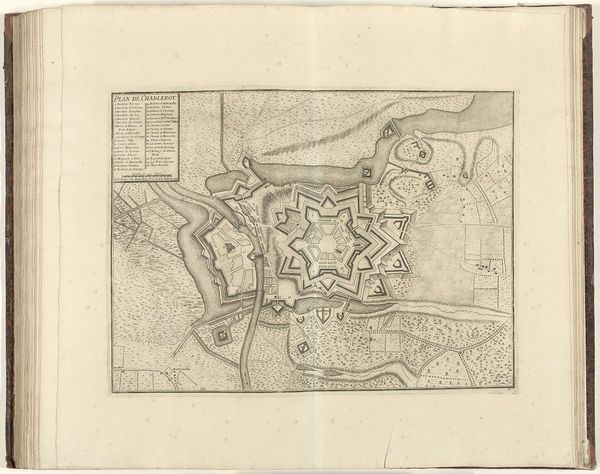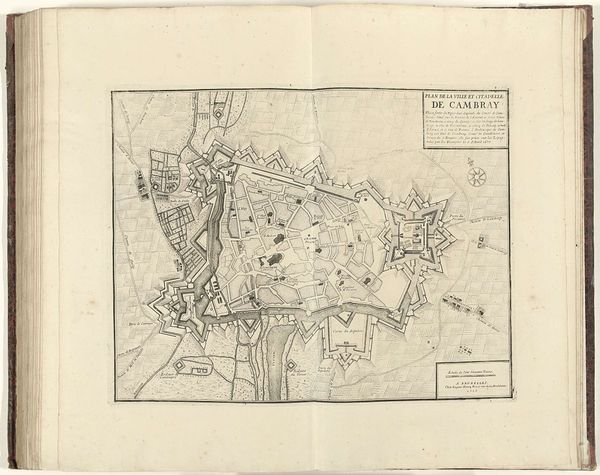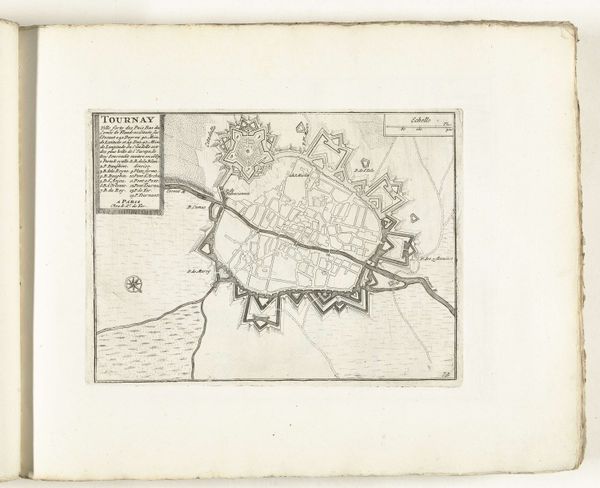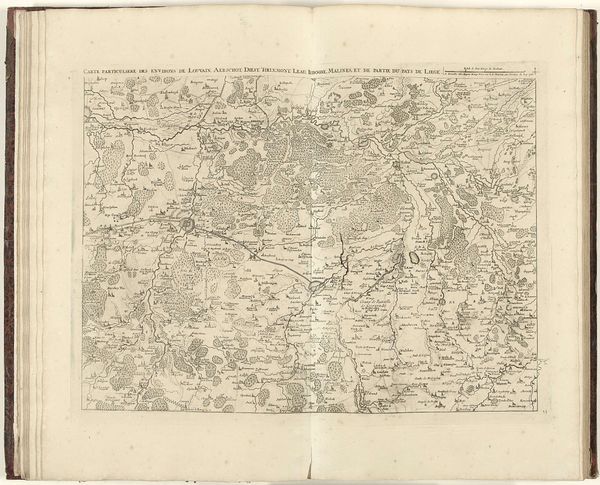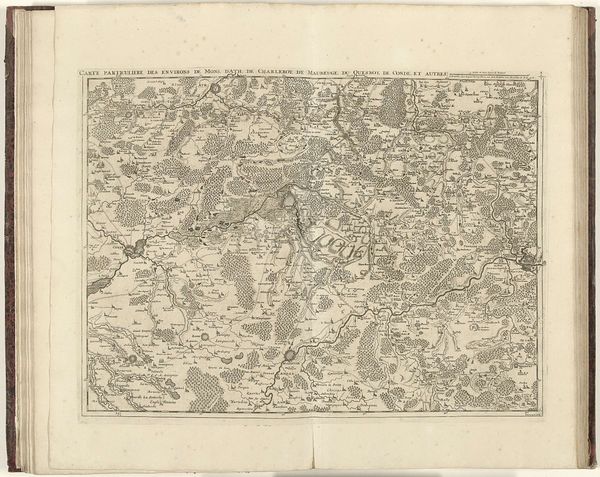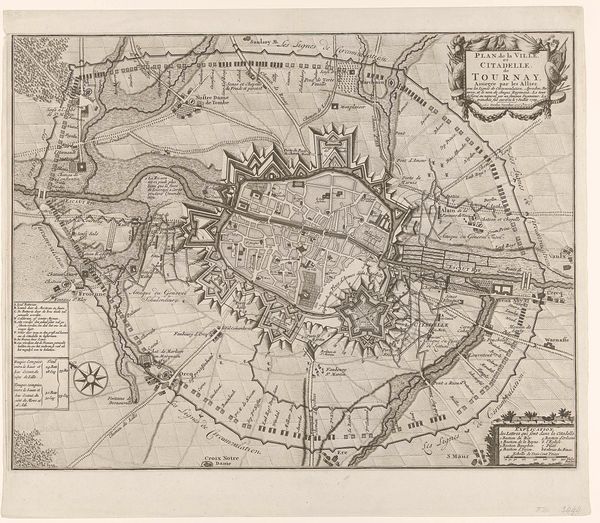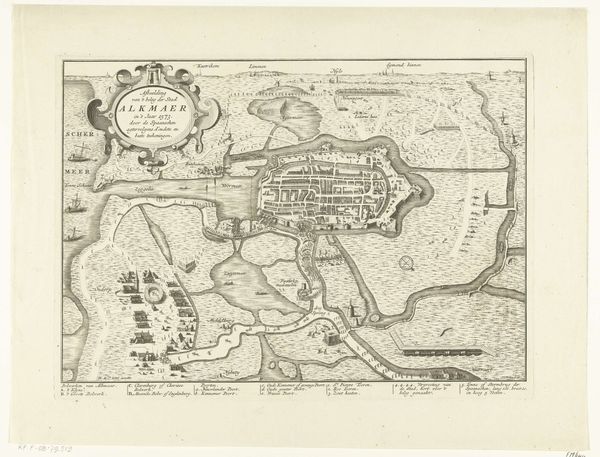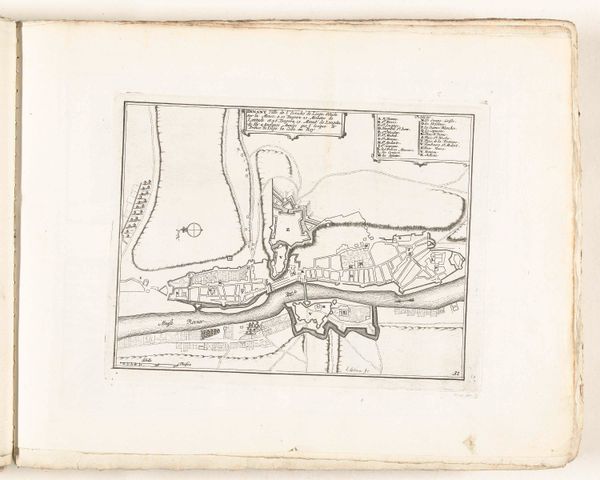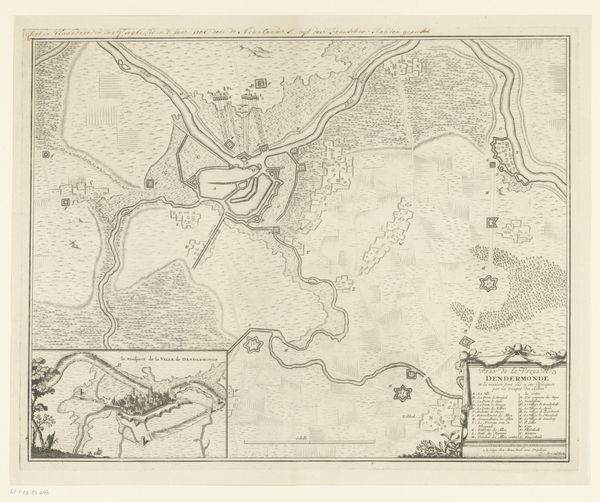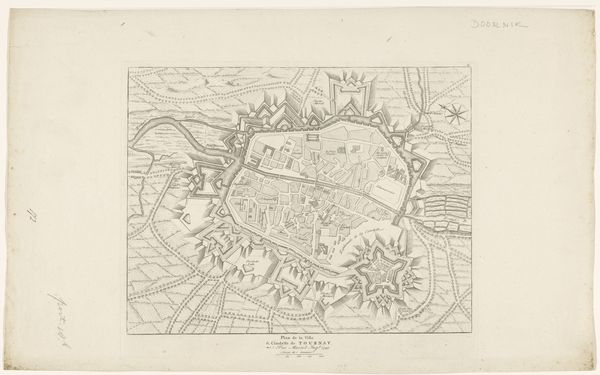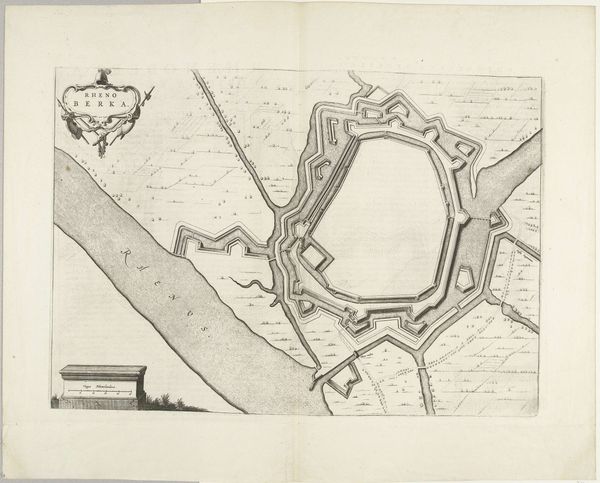
drawing, print, engraving
#
drawing
# print
#
landscape
#
history-painting
#
engraving
Dimensions: height 305 mm, width 335 mm
Copyright: Rijks Museum: Open Domain
Curator: Before us is Jacobus Harrewijn’s print, "Beleg van Tournai, 1709," made in 1709 and part of the Rijksmuseum's collection. It is an engraving and drawing, portraying a historical landscape. Editor: Immediately, I see this delicate and very formal topographical view. The meticulous lines are balanced, and the network of connections it portrays creates a visual puzzle with an underlying ominous mood—all that meticulous detail suggests calculated strategy. Curator: Indeed. The network you note functions both literally, representing infrastructure, and metaphorically, expressing strategic command. Note how the carefully inscribed walls communicate fortification. The river networks, rendered as calligraphic lines, visually penetrate deep into the composition, establishing vectors of movement and suggesting possible weaknesses within the fortress itself. Editor: The city within—Tournai itself— appears almost like a spider web, ensnared by external forces. Does the work suggest resilience, or inevitable doom through its complex mapping? The symbolism feels deeply embedded, as walls both protect and imprison, their purpose always in tension. Curator: An apt interpretation! The walls delineate form, and by virtue of this artistic decision they function as compositional boundaries of negative and positive space. Structurally, one appreciates the spatial logic Harrewijn employs, where perspectival projection and topographical representation must adhere closely, bound to the conventions of historical cartography as its guiding mode. Editor: It’s hard to avoid seeing this elaborate visual encoding through our contemporary lenses—I think of siege as cultural metaphor. Curator: Precisely. Beyond surface aesthetics, there are layers, both spatial and semantic, prompting the viewer to move past documentation, contemplating themes of defense, dominion, and, ultimately, time itself. Editor: Harrewijn's artistic choices in Beleg van Tournai offer fertile ground for considering this visual relic through structural analysis and deeper historical significance. Curator: I agree. This layered approach enhances our comprehension and appreciation of the work, allowing the composition's formal strategies and intrinsic elements to illuminate the potent historical symbolism present.
Comments
No comments
Be the first to comment and join the conversation on the ultimate creative platform.

